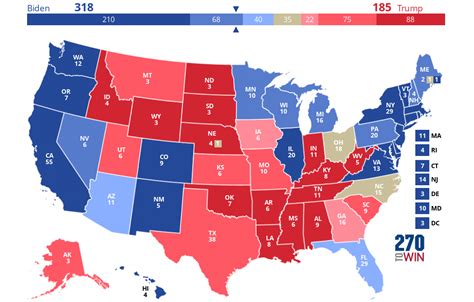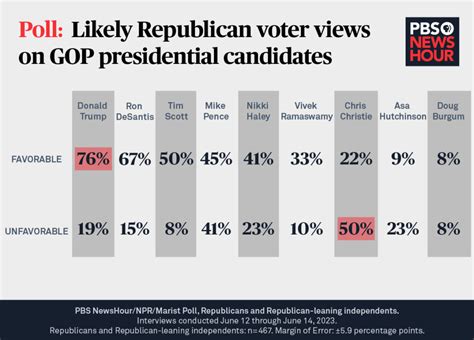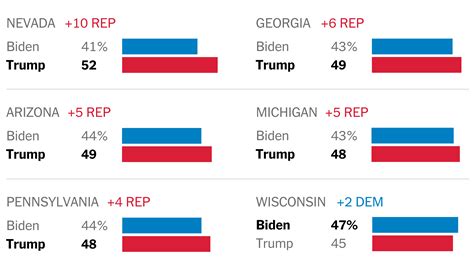Explore the key factors influencing voter behavior, the role of social media, economic impacts, swing states in 2024, and campaign strategies in elections.As the 2024 U.S. election approaches, a perfect storm of factors is converging to shape its dynamics. Voter behavior is not just influenced by party loyalty but is increasingly swayed by economic conditions, social media trends, and the pivotal role of swing states. Understanding these elements is essential for anyone looking to navigate the complexities of this year’s electoral landscape. From the nuanced interplay of campaign strategies to the rising significance of digital platforms, our exploration delves into the critical components that will define the upcoming election. Join us as we unpack the intricate web of influences that will ultimately steer public sentiment and voter turnout, ensuring you are well-informed ahead of this crucial democratic event.
Understanding The Key Factors Influencing Voter Behavior
When it comes to electoral politics, understanding the nuances of voter behavior is essential for predicting outcomes and shaping campaign strategies. Several factors contribute to how individuals decide which candidates or parties to support. Here are some of the key elements influencing voter behavior in the 2024 U.S. Election:
- Demographics: Age, gender, race, and education level significantly influence voters’ choices. Different demographic groups often prioritize different issues, making it crucial for candidates to tailor their messages accordingly.
- Emotional Appeal: Voters are motivated by emotions. Campaigns that successfully connect with voters on an emotional level can sway opinions and enhance voter turnout.
- Political Ideology: A voter’s ideological beliefs play a significant role in shaping their preferences. Those with strong affiliations to either party are more likely to support candidates who align closely with their ideological stance.
- Current Events: Ongoing national and international events can shift the electorate’s mood. Events related to security, economy, or social justice can greatly influence voter sentiment in the lead-up to the elections.
- Peer Influence: Social circles can heavily influence voters’ opinions. Discussions with friends, family, and colleagues often shape perceptions and electoral choices.
- Media Consumption: With the abundance of media options available, how voters consume information—whether through traditional news outlets, social media, or podcasts—can affect their understanding of candidates and issues.
- Candidate Image: The public perception of a candidate can be pivotal. Charismatic candidates who resonate with voters’ values and concerns often enjoy a distinct advantage.
- Healthcare and Economic Conditions: As mentioned in earlier sections, personal and national economic conditions heavily influence voter priorities, especially on critical issues like healthcare, job security, and inflation.
- Campaign Messaging: Well-crafted messages that align with voters’ needs can strongly sway opinions. Effective use of slogans, advertisements, and public speeches are essential components of a successful campaign.
- Voter Engagement Initiatives: Programs aimed at voter registration and turnout efforts can significantly influence participation rates, especially among underrepresented groups.
By gaining a deeper understanding of these factors, campaigns can better position themselves to connect with voters. As the 2024 election approaches, candidates will need to navigate this complex landscape to win the hearts and minds of the electorate.
Exploring The Role Of Social Media In Elections
Social media has transformed the political landscape, becoming an essential tool in the electoral process. It serves not only as a platform for candidates to communicate directly with voters but also as a space where individuals share their opinions and engage in discussions about policies and candidates. The influence of social media on elections cannot be overstated, particularly in the context of the upcoming 2024 U.S. election.
One of the primary ways that social media shapes political discourse is by allowing for rapid information dissemination. Candidates can quickly share updates, campaign messages, and policy positions with a broad audience, often bypassing traditional media filters. This immediate access helps to keep voters informed and engaged. However, it can also contribute to misinformation, where false information spreads just as quickly, complicating voters’ ability to make well-informed decisions.
Moreover, the algorithms used by social media platforms often create echo chambers, where users are exposed predominantly to views that align with their own. This phenomenon can polarize opinions and reinforce existing beliefs, making it crucial for campaigns to engage with diverse audiences. Strategies that prioritize authentic interaction—like live Q&A sessions or informal posts—can foster a sense of community and loyalty among supporters.
Social media also plays a significant role in mobilizing voters. Campaigns often utilize targeted ads and messaging strategies that cater to specific demographics, increasing the likelihood of engagement from those groups. This targeted approach can be particularly effective in reaching younger voters who may not engage through traditional avenues like television or print media.
Additionally, movements and trends on social media can significantly impact voter priorities. Hashtags and movements that gain traction online can bring attention to specific issues, influencing not only the candidates’ platforms but also the conversations happening among voters. For instance, grassroots movements that emerge on social media can mobilize individuals around critical issues, leading to increased voter turnout and engagement.
Understanding the role of social media in elections is crucial for candidates and voters alike. As we approach the 2024 election cycle, the impact of social media will continue to evolve, shaping public perception and engagement in ways that are both beneficial and challenging. Therefore, it is vital to remain aware of these dynamics and how they can influence the electoral process as a whole.
Analyzing The Impact Of Economic Conditions On Voter Sentiment
Economic conditions play a crucial role in shaping voter sentiment during elections. As the nation’s economy fluctuates, so too do the priorities and concerns of its citizens. Understanding the relationship between economic factors and voter behavior can provide critical insights into the 2024 U.S. election dynamics.
During times of economic prosperity, voters may prioritize issues such as taxation and government spending. Conversely, in periods of economic instability—characterized by high unemployment rates, inflation, or declining GDP—voter sentiment tends to shift towards candidates who promise effective economic solutions. This shift often results in voters searching for parties or candidates that demonstrate accountability, knowledge, and a clear plan to resolve economic challenges.
Polling data and historical trends indicate that voters often exhibit a strong preference for candidates perceived as being economically competent. For instance, previous elections have shown that Democratic candidates tend to fare better in times of economic recovery while Republican candidates are often favored in contexts marked by economic distress. The ability of candidates to frame their economic agendas effectively can significantly influence voter perceptions and choices at the ballot box.
Additionally, key economic indicators such as wage growth, stock market performance, and inflation rates greatly influence voter sentiment. As these economic indicators fluctuate, they not only affect individual finances but also shape broader perceptions of government efficacy and party reliability. Understanding these dynamics will be crucial for candidates preparing their campaigns in the lead-up to the 2024 elections.
Analyzing the impact of economic conditions on voter sentiment reveals that a strong grasp of the economic landscape will be integral to the strategies employed by candidates. The interplay between economic realities and voter priorities offers a compelling narrative that will likely be a significant factor in the upcoming elections.
Understanding The Importance Of Swing States In The 2024 Election
As we approach the 2024 U.S. election, one of the critical aspects to consider is Understanding The importance of swing states. These are the states that do not consistently vote for one political party and can be pivotal in determining the final outcome of the election. Swing states are essential because they have a higher likelihood of swaying the overall electoral vote, thereby influencing who becomes the next president.
Historically, swing states such as Florida, Ohio, Pennsylvania, and Wisconsin have played a significant role in election outcomes. Their unique political demographics and varying economic conditions make them battlegrounds that both parties target extensively during campaign seasons.
One reason for their importance is the allocation of electoral votes. The Electoral College process means that winning a swing state can provide a candidate with a substantial number of electoral votes, which can be decisive. For example, in the previous election cycles, candidates focused heavily on these states, adapting their messages and campaign strategies to resonate with local voters.
Furthermore, demographic changes within these states can shift the political landscape. For instance, growing urban populations might lean towards Democratic candidates, while rural areas may gravitate towards Republicans. This dynamic makes it crucial for candidates to continuously assess voter sentiment and adapt their outreach effectively.
In the 2024 election, analyzing the issues that matter most to voters in swing states—such as healthcare, job security, education, and immigration—will be pivotal for both major parties. The ability to engage with and understand the concerns of these voters could ultimately sway the election results.
Understanding The role of swing states in the 2024 election is essential for anyone looking to grasp the electoral process in America. As campaigns unfold, the strategies employed to capture the attention and votes of these key areas will likely be the deciding factor in who takes office come November.
Evaluating The Effect Of Campaign Strategies On Election Outcomes
Campaign strategies play a crucial role in shaping the outcomes of elections, and understanding the intricacies of these strategies is essential for predicting electoral success. There are various elements involved in campaign strategies that can significantly affect voter decisions and overall election results.
Among the most important factors are:
| Factor | Description |
|---|---|
| Messaging | Strong, clear messaging that resonates with voters can create a lasting impact, influencing their opinions and votes. |
| Targeting | Effective targeting of specific demographics allows campaigns to tailor their messages to the interests and needs of different voter groups. |
| Advertising | Utilizing various media platforms to reach voters increases visibility and reinforces campaign messages across different audiences. |
| Ground Game | A strong ground game with door-to-door canvassing and local events can create personal connections, encouraging voter turnout. |
Moreover, as campaigns evolve, the use of social media strategies has become increasingly dominant. Campaigns often leverage platforms like Twitter, Facebook, and Instagram to engage with voters directly and spread their messages in real-time. This tactic not only enhances visibility but also allows for immediate feedback from the electorate, making it a powerful tool for gauging public sentiment.
The adaptability of a campaign is another crucial element. Successful campaigns are often those that can pivot based on the current political climate, emerging issues, and shifting voter concerns. By staying attuned to these changes, candidates can modify their strategies effectively, further maximizing their chances for success in the election.
Frequently Asked Questions
What are the main factors influencing the 2024 U.S. elections?
The key factors include voter demographics, economic conditions, political polarization, and major social issues such as healthcare and climate change.
How is the electoral landscape different in 2024 compared to previous elections?
In 2024, the landscape is marked by increased involvement of younger voters, the impact of social media on campaigning, and unique challenges posed by the post-pandemic environment.
What role does campaign financing play in the 2024 elections?
Campaign financing remains crucial as candidates vie for resources to promote their messages. The increasing influence of Super PACs and dark money organizations is shaping the dynamics of race.
How might third-party candidates affect the election outcome?
Third-party candidates could siphon votes from major party candidates, potentially altering strategic approaches and outcomes in closely contested states.
What are the critical issues that voters are prioritizing in 2024?
Voters are especially focused on economic stability, healthcare access, climate change, racial justice, and immigration policy.
How has voter turnout changed in recent elections, and what can we expect in 2024?
Voter turnout has increased in recent elections, particularly among young and minority voters, and similar trends are expected in 2024, potentially leading to higher overall participation.
What impact do social media and misinformation have on the election process?
Social media significantly shapes public opinion and voter engagement, but it also presents challenges due to the spread of misinformation and its potential to influence voter behavior.









